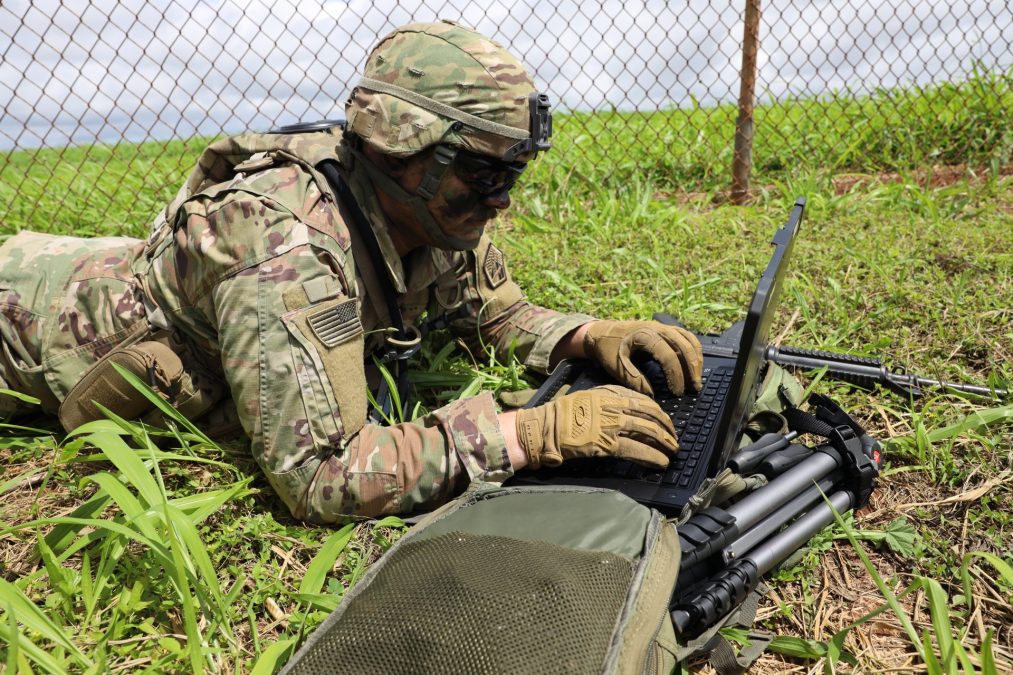Army cyber unit marking two major milestones at upcoming exercise in Hawaii

The Army’s 11th Cyber Battalion is marking two firsts at an upcoming Joint Pacific Multinational Readiness Center rotation in Hawaii: deploying a full company and squaring off on opposing sides.
That battalion, which sits beneath the 780th Military Intelligence Brigade under Army Cyber Command, provides tactical, on-the-ground cyber operations (mostly through radio-frequency effects), electronic warfare and information operations.
The unit consists of four companies with over 300 personnel total and five established expeditionary cyber and electromagnetic activities teams — scalable formations that are designed to augment units upon request. They’re expected to maneuver with units, plan tactical operations for commanders and conduct ops on the ground. The vision is to have a total of 12 ECTs by September 2027 — one for each active division in the Army — capable of providing offensive cyber capabilities, EW and information advantage functions.
An ECT from Apex Company of the 11th Cyber Battalion will deploy to support 2nd Brigade, 25th Infantry Division as part of its mid-October rotation at the Joint Pacific Multinational Readiness Center in Hawaii. That brigade is one of the experimental units for the Army’s so-called “transforming in contact” concept, where more and more units are receiving newer technologies to experiment with. Under that concept, the service plans to use deployments and troop rotations to test new equipment — mainly commercial off-the-shelf gear — that could allow units to be more responsive on a dynamic battlefield. Three capability areas where the Army needs to be faster and more adaptable when it comes to delivering equipment to forces under the concept include: unmanned aerial systems, counter-UAS and electronic warfare.
Each brigade in the Army, as part of its capstone training event to be validated as a fully trained and ready unit, must go through a combat training center rotation in which they are stressed under a simulated battle campaign against an opposing force.
Moreover, in addition to augmenting 2nd Brigade, an ECT from Apex Company will also support the opposing force going against 2nd Brigade — marking the first time two ECTs will square off on opposing sides, according to Army officials.
The ECT supporting 2nd Brigade will focus on conducting electromagnetic reconnaissance of the opposing force in support of the targeting process and supporting the commanders’ scheme of maneuver, while the ECT supporting the opposing force will focus on disrupting 2nd Brigade’s command and control systems, providing the opposing force commander situational awareness in the electromagnetic spectrum, Maj. Shawn Quillen, the operations officer for 11th Cyber Battalion, said in an email.
Personnel from the 11th Cyber Battalion will be integrated at all echelons from division down to the platoon level and work to establish tactics, techniques and procedures for how CEMA cells — staff sections at echelon that include planners to provide targeting options and capabilities to achieve a commander’s objective (just as an artillery planner would offer the commander choices related to their field for a pending operation) — plan and execute CEMA missions with the cyber battalion, a spokesperson from 25th Infantry Division said.
A majority of those tactics and techniques created will come from the platoon level as they are ultimately the eyes and ears for what is happening on the ground, the spokesperson noted, adding there will likely be a slight learning curve for everyone involved, but units are expected to be able to execute with great success.
ECTs have supported more than a dozen combat training center rotations since 2019, Lt. Col. Luis Etienne said in an email. Those teams have served as enablers for conventional and special operations forces for rotating units as well as opposing forces at the National Training Center at Fort Irwin, California, and the Joint Readiness Training Center at Fort Johnson in Louisiana.
Officials in the past have explained the importance of these events for the ECTs and 11th Cyber Battalion to be able to hone their technical skills while also learning how to support and maneuver with the unit requesting their assistance. Work typically begins 180 days before the combat training center rotation so all parties involved can integrate and build trust prior to being deployed on the ground.
“Engagements like those at Combat Training Centers (CTCs), especially JPMRC, allow the Soldiers of the 11th to refine their tactical and technical skills to operate in realistic austere environments and achieve mission success. The experiences gained from the engagements also informs commanders and senior leaders on how the 11th can and will support their operations,” Maj. Vincent Michel, information advantage cell officer in charge, said in an email.
“These engagements also inform the Cyber Electromatic Activities (CEMA) community across the Army on the best practices and lessons learned so they can transform in contact, and rapidly adapt to the changing operational environment. More importantly, these engagements allow the 11th to focus on warfighting, and honing our craft of delivering CEMA effects in and thru any environment (jungle, desert, urban, etc…). We stand ready to provide Cyber, Electromagnetic Warfare, and Information Advantage capabilities to the Army and Joint Force to enable multi-domain operations anywhere in the world,” he added.
The 11th Cyber Battalion was initially built out of the Army’s desire to have cyber support and capabilities at the corps and below level. Historically, cyber capabilities were typically held at higher authorities such as at the theater and joint level.
Following a pilot program to test the concept, the Army created the 915th Cyber Warfare Battalion, which evolved into the 11th Cyber Battalion, that was activated in October 2022.
The battalion officially activated the final company in early July.



